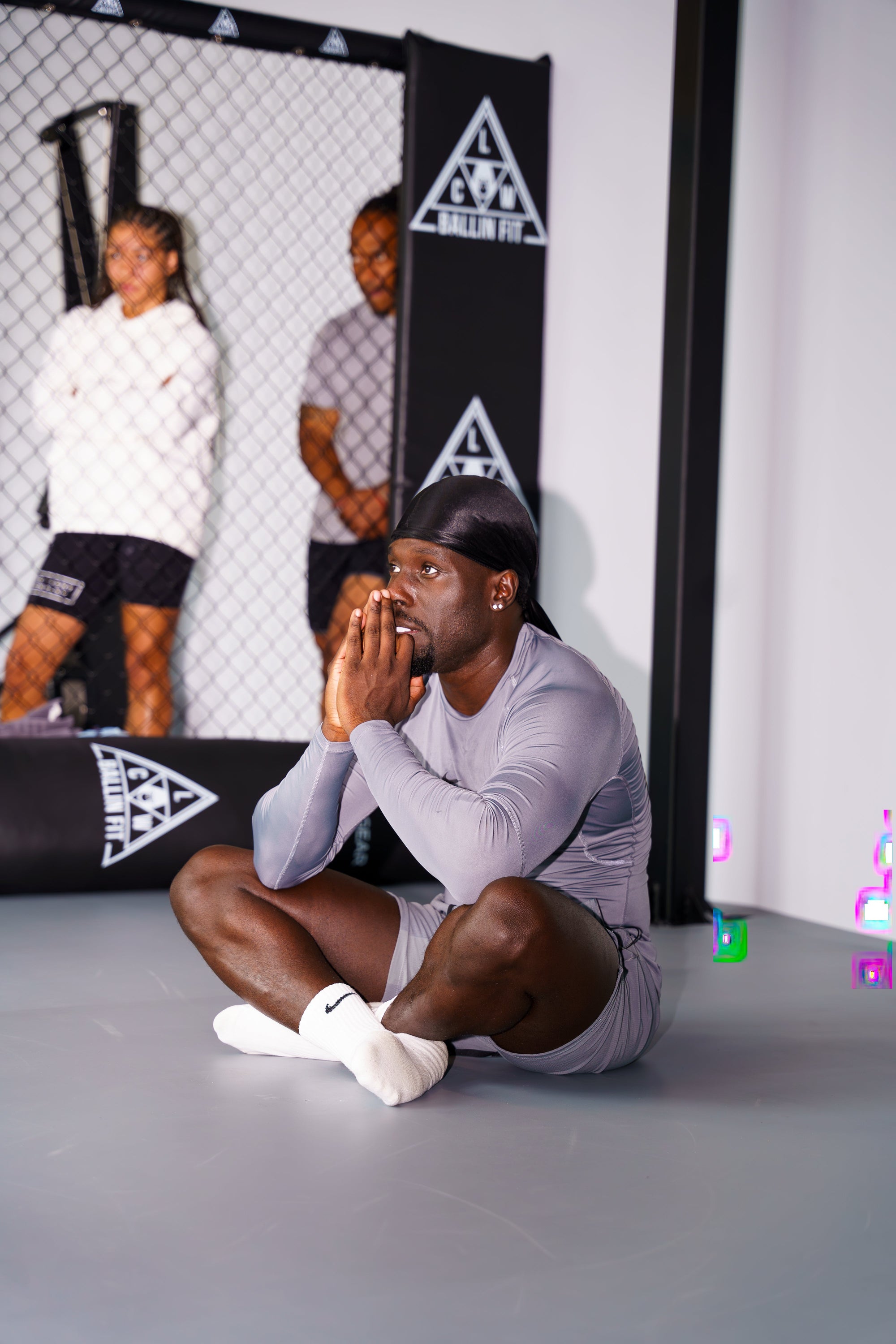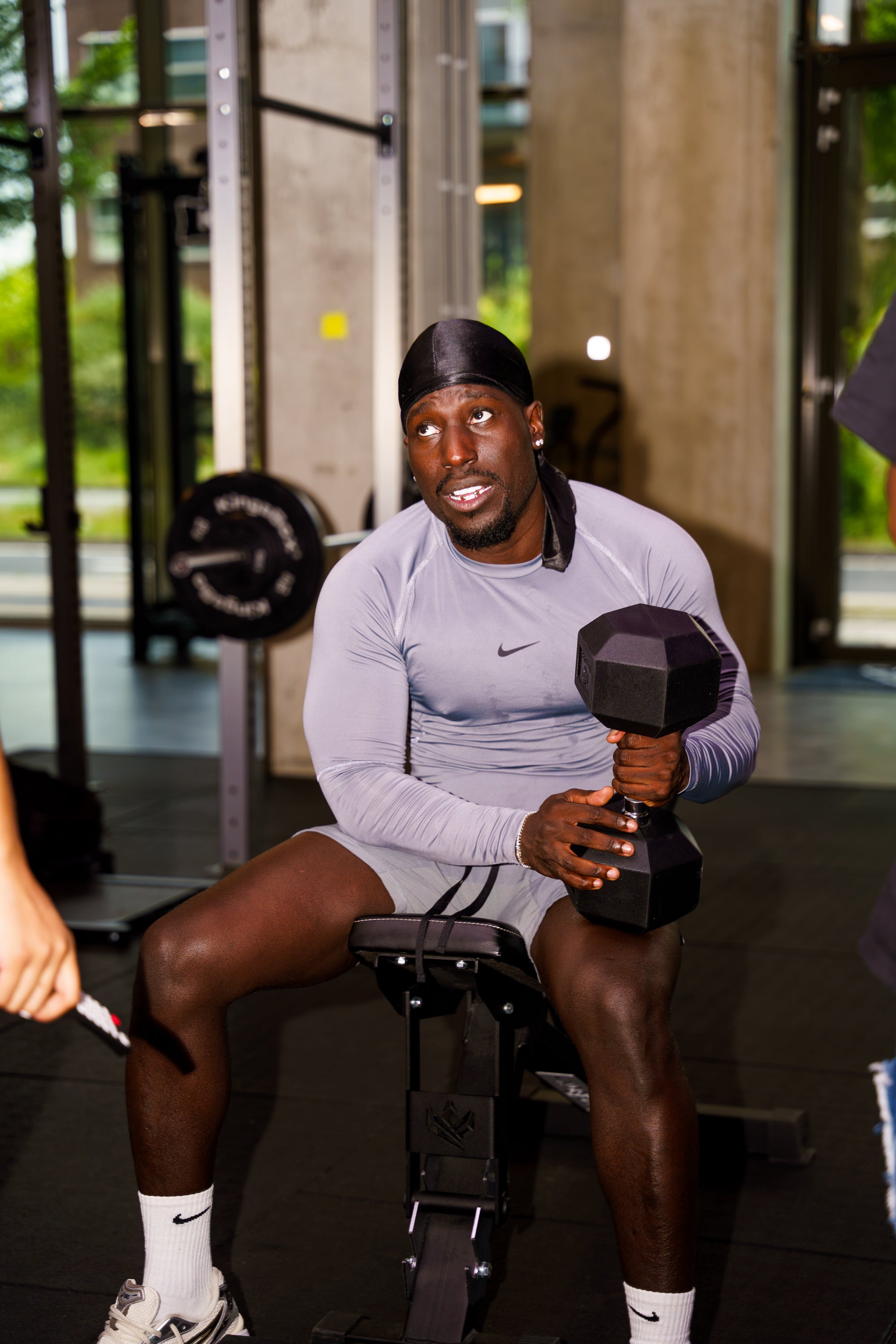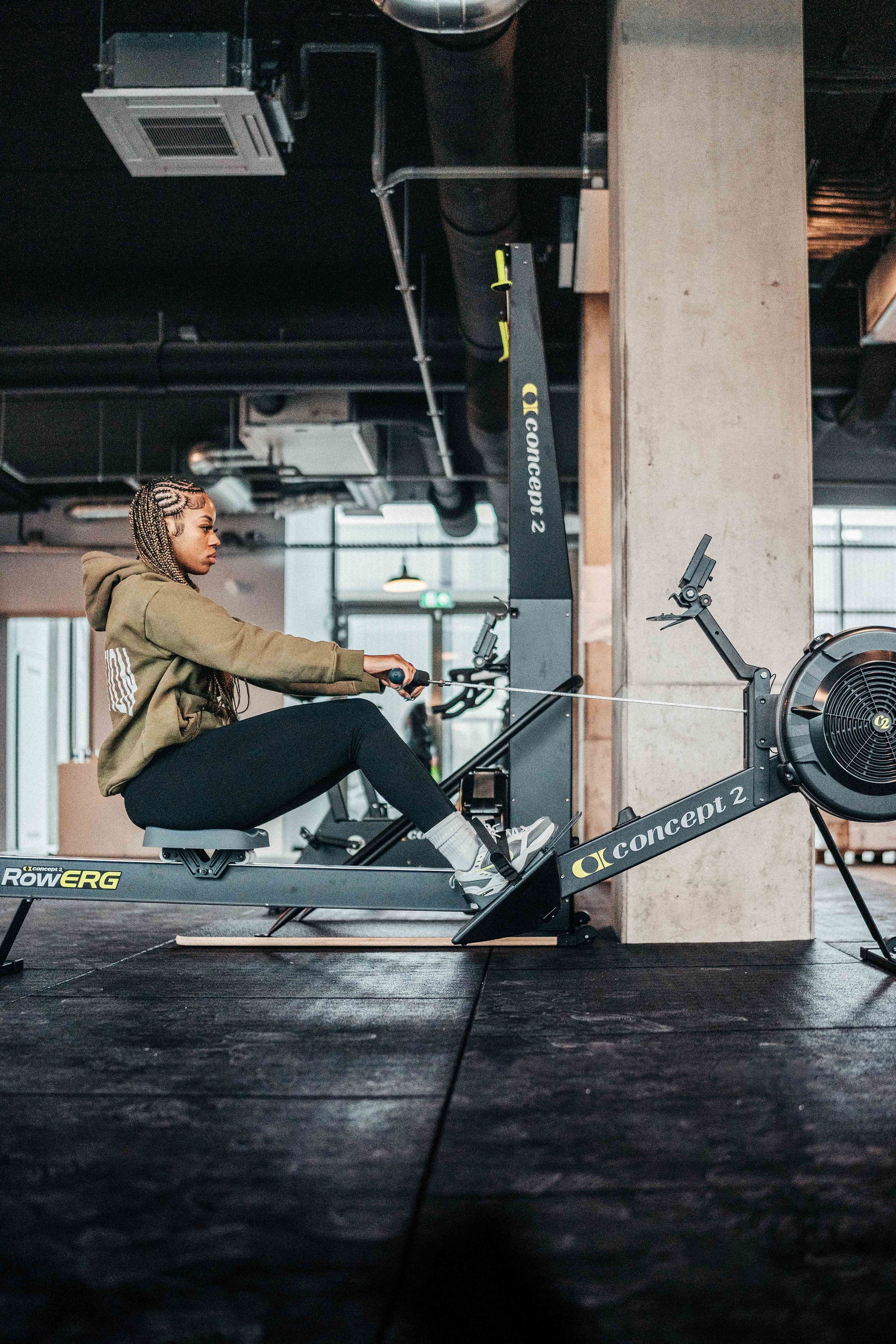Hyrox Competition Strategies: How to Plan Your Race Day Approach
Champion, preparing for a Hyrox competition isn’t just about the workouts you do—it's about crafting a comprehensive game plan that covers every detail from the moment you wake up to the final sprint across the finish line. At BallinFit, we understand that race day is a culmination of months of hard work, discipline, and smart training. Our head coach, Zwayder, has developed strategies that not only optimize your physical performance but also sharpen your mental edge. In this guide, we’re diving deep into Hyrox competition strategies that will help you plan your race day approach, ensuring you’re primed for success in every aspect.
1. Pre-Race Planning: The Blueprint to Success
A. Set Clear Objectives and Goals
Before the competition, it’s essential to define what success means to you. Are you looking to break a personal record, secure a podium finish, or simply complete the event with a strong performance? Setting clear objectives creates a roadmap for your race day strategy.
- **Write Down Your Goals:**List your primary goals, such as finishing within a certain time, achieving specific splits, or mastering transitions between stations.
- **Break It Down:**Divide your overall goal into smaller, manageable targets for each segment of the race. This might mean setting a target time for the first 1 km, planning your pacing strategy for the wall ball station, or determining how you’ll tackle the sled push.
Coach Zwayder’s Insight:
"Every champion starts with a clear plan. Define your objectives so that on race day, every step and every rep has a purpose."
B. Create a Detailed Race Day Timeline
A well-structured timeline minimizes last-minute stress and ensures that every aspect of your preparation is covered.
- **Wake-Up Routine:**Decide on a wake-up time that gives you ample time for a proper morning routine, including a light breakfast, hydration, and mental focus exercises.
- **Pre-Race Meal and Hydration Schedule:**Plan your meals and hydration carefully. For example, aim to have a balanced pre-race meal 60–90 minutes before the event, and schedule hydration breaks throughout the day.
- **Warm-Up Timing:**Allocate at least 15–20 minutes for your dynamic warm-up at the competition venue. Familiarize yourself with the warm-up area if possible.
- **Transition Periods:**Identify how much time you have between different sections of the race and plan short recovery strategies for each transition.
Actionable Tip:
Use a race day checklist and timeline app to keep track of every detail. This minimizes anxiety and ensures you’re not caught off guard by any logistical issues.
2. Mental Preparation: Cultivating a Champion’s Mindset
A. Visualization and Mental Rehearsal
Your mind is the most powerful tool you have on race day. Visualization is a proven technique used by elite athletes to prepare for high-pressure situations.
- **Daily Visualization:**Spend 5–10 minutes each day imagining your perfect race. Visualize every detail—from the sound of the starting gun to the cheers of the crowd, and your strong, determined finish.
- **Race Day Walk-Through:**Before the event, mentally rehearse your race. Picture each transition, the key stations, and even potential obstacles. Imagine overcoming them with ease and efficiency.
Coach Zwayder’s Insight:
"Visualization primes your brain to react as if the race is already underway. It’s like rehearsing the play before the big game—when race day arrives, you’ll perform it flawlessly."
B. Positive Self-Talk and Affirmations
Combat nerves and self-doubt with powerful affirmations that reinforce your belief in your abilities.
- **Develop a Mantra:**Create a mantra that resonates with you, such as “I am unstoppable” or “Every challenge makes me stronger.” Repeat this during your warm-up and right before the start.
- **Mindfulness Practices:**Engage in brief meditation sessions or deep-breathing exercises to clear your mind and reduce anxiety.
Actionable Tip:
Write your mantra on a sticky note and place it in your race bag or on your water bottle. Seeing it can serve as a quick reminder during moments of doubt.
3. Physical Preparation: Fine-Tuning Your Body
A. Tapering Your Training
As race day approaches, reducing training intensity—a process known as tapering—is crucial to ensure your body is fresh and primed for maximum performance.
- **Reduce Volume, Maintain Intensity:**In the final week before the race, cut back on overall training volume while keeping the intensity high with shorter, sharper workouts.
- **Focus on Technique:**Use this time to refine your form in key movements like wall balls, sled pushes, and sprints. Short, focused drills help maintain muscle memory without causing fatigue.
Real-World Example:
Many athletes at BallinFit report that tapering allowed them to feel more energized and responsive on race day. By reducing fatigue, you can maximize every explosive movement during the competition.
B. Recovery and Rest
Proper recovery is essential for performance. As you approach the event, prioritize activities that enhance muscle repair and reduce stress.
- **Active Recovery:**Engage in light activities such as yoga, stretching, or a gentle swim to keep your muscles loose and blood flowing.
- **Sleep Quality:**Ensure you’re getting 7–9 hours of quality sleep per night. Consider using sleep tracking apps to monitor and improve your sleep habits.
- **Nutrition:**Maintain a balanced diet rich in complex carbohydrates, lean proteins, and healthy fats. Focus on pre- and post-workout meals that support muscle recovery and energy replenishment.
Coach Zwayder’s Tip:
"Listen to your body. The final days before the race are about replenishing energy and repairing tissues. Prioritize sleep, nutrition, and active recovery to arrive at the starting line feeling like a champion."
4. Logistics and Equipment: Being Prepared Inside and Out
A. Gear Check and Preparation
Ensure that all your equipment is in top condition and that you have everything you need for race day.
-
Essential Gear:
- Quality training shoes that provide the right balance of support and cushioning.
- Comfortable, moisture-wicking athletic apparel.
- Compression garments to reduce muscle vibration and support recovery.
- Recovery tools like foam rollers or massage sticks.
- **Pre-Race Bag:**Prepare a race bag the night before with your gear, nutrition (snacks, electrolyte drinks), and any necessary documentation (race number, timing chip, etc.).
- **Weather Preparation:**Check the weather forecast and adjust your gear accordingly. In Amsterdam, conditions can be unpredictable—bring an extra layer if needed.
B. Venue Familiarization
If possible, visit the competition venue ahead of time to familiarize yourself with the layout and logistics.
- **Course Layout:**Understand where each station is located, the transition areas, and any potential challenges (like uneven terrain or crowded sections).
- **Parking and Transport:**Plan your route to the venue to avoid any last-minute hassles.
- **Warm-Up Area:**Identify a spot where you can perform your warm-up routine without interruption.
Actionable Tip:
Create a checklist for race day. Include everything from gear and nutrition to travel logistics and pre-race rituals. This ensures nothing is overlooked.
5. In-Race Strategy: Pacing, Transitions, and Adaptability
A. Pacing Your Efforts
A consistent pace is key to finishing strong. Overexerting early can leave you drained for the latter parts of the race.
- **Know Your Zones:**Use heart rate monitors to keep track of your effort. Aim for a sustainable pace that allows you to maintain form and speed throughout the race.
- **Segmented Goals:**Break the race into segments and set mini-goals. For instance, maintain a steady pace for the first half, then gradually increase your effort as you approach the final station.
- **Adjust as Needed:**Be prepared to adapt your pace based on how you feel. If you’re experiencing excessive fatigue, it might be better to conserve energy rather than push too hard early on.
B. Efficient Transitions
Smooth transitions between different segments of the race can save valuable time and prevent energy loss.
- **Practice Transitions:**During training, simulate the transitions between stations. Focus on minimizing downtime—move quickly but safely.
- **Active Recovery:**Use the short breaks between stations for light recovery. Walk briskly, perform deep-breathing exercises, and stretch lightly to keep your muscles ready for the next burst.
- **Stay Focused:**Maintain mental clarity during transitions. Use your pre-determined mantra or visualization techniques to stay motivated and on track.
Real-World Example:
Tom, a seasoned competitor at BallinFit, noted that improving his transition efficiency saved him precious seconds that ultimately boosted his overall race time. By practicing transitions during training, he was able to maintain momentum and stay focused even during brief recovery periods.
6. Post-Race Recovery: Regroup and Reflect
Your race isn’t over when you cross the finish line. The post-race period is crucial for recovery and learning from your performance.
A. Immediate Recovery Strategies
- **Cool-Down Routine:**Right after finishing, engage in a cool-down routine that includes light jogging or walking, followed by static stretching to reduce muscle tension.
- **Hydration and Nutrition:**Rehydrate and consume a recovery snack or meal rich in protein and carbohydrates to kickstart muscle repair and replenish energy stores.
- **Mental Reflection:**Take a few moments to reflect on your performance. Identify what went well and what could be improved for next time.
B. Long-Term Recovery
- **Rest and Active Recovery:**Schedule a rest day or active recovery session the day after the race. Light yoga, a gentle swim, or a casual walk can help keep your muscles loose.
- **Review Your Training:**Analyze your performance data and training log. Adjust your future training plans based on the insights you gain.
- **Celebrate Your Achievements:**No matter the outcome, acknowledge your effort and progress. Every race is a step toward becoming a stronger, more resilient champion.
Coach Zwayder’s Insight:
"Post-race recovery is your time to reset and rebuild. Celebrate your wins, learn from your challenges, and let the recovery process prepare you for your next big race."



